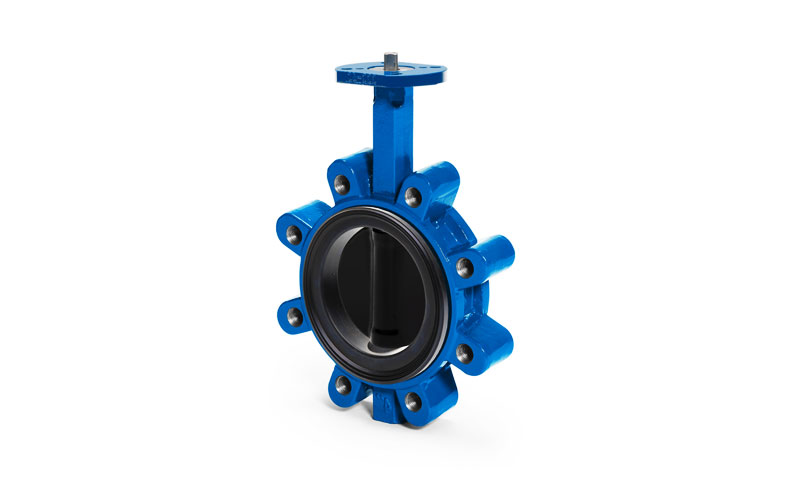1. Introduzzjoni
Il-valvoli tal-farfett tad-dwana huma komponenti essenzjali fis-sistemi moderni ta 'kontroll tal-fluwidu, magħrufa għad-disinn kompatt tagħhom, operazzjoni mgħaġġla, u versatilità.
Oriġinarjament kunċettwali fil-bidu tas-seklu 20, dawn valvi evolvew b'mod sinifikanti biex jissodisfaw it-talbiet dejjem jikbru ta 'industriji li jeħtieġu soluzzjonijiet ta' kontroll tal-fluss effiċjenti u kosteffettivi.
Illum, valvoli farfett huma użati ħafna f'setturi varji bħal trattament tal-ilma, żejt u gass, HVAC, Ipproċessar kimiku, Marine, u ikel u xorb industriji.
Il-popolarità tagħhom ġejja mill-kapaċità tagħhom li jimmaniġġjaw firxa wiesgħa ta 'fluwidi—inklużi gassijiet, likwidi, u slurries—b'waqgħa minima fil-pressjoni u kapaċitajiet ta 'qtugħ rapidu.
2. X'inhu Valv tal-farfett?
A valv tal-farfett huwa tip ta 'valv li jdur kwart-dawra użat biex jirregola, iżolati, jew tikkontrolla l-fluss tal-fluwidi, gassijiet, jew demel likwidu fis-sistemi tal-pajpijiet.
Ismu huwa derivat mill-operat tad-diska, li jixbah il-ġwienaħ ta’ farfett hekk kif idur fil-korp tal-valv.
Il-valvoli tal-farfett huma rikonoxxuti b'mod wiesa 'għal tagħhom disinn kompatt, attwazzjoni malajr, prezz baxx, u firxa wiesgħa ta 'daqs, jagħmluhom adattati kemm għall-baxx- u applikazzjonijiet ta 'pressjoni għolja f'varjetà ta' industriji.
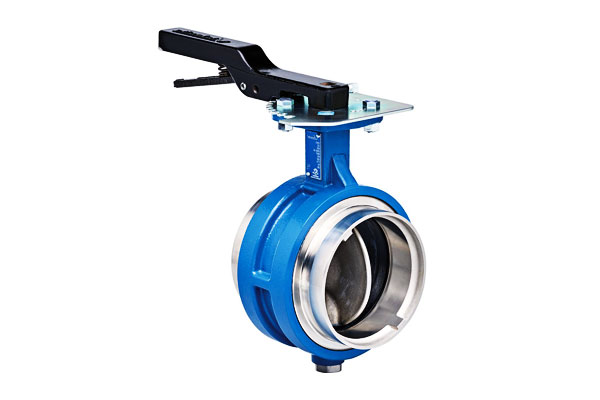
Komponenti ewlenin u l-Funzjonijiet tagħhom
Korp tal-Valv
Il-korp tal-valv huwa l-kisi ta 'barra li jospita l-komponenti interni kollha u l-interfaces mal-pipeline permezz tal-wejfer, Lug, flanged, jew truf iwweldjati mill-butt.
Id-daqsijiet tal-valv tipikament ivarjaw minn DN50 (2 pulzieri) għal aktar minn DN3000 (120 pulzieri) għal applikazzjonijiet industrijali fuq skala kbira.
Diska tal-farfett
Id-diska hija l-element li jdur li jirregola l-fluss. Ffurmat bħal pjanċa ċirkolari jew ellittika, huwa mmuntat jew ċentralment jew ftit offset fuq ix-xaft.
Meta mdawwar 0° (parallel mal-fluss), id-diska tippermetti fluss sħiħ mill-valv. Meta mdawwar 90° (perpendikulari), jimblokka għal kollox il-fluss, kisba shutoff.
Zokk tal-valv (Xaft)
Iz-zokk jgħaqqad l-attwatur mad-diska, jittrasmetti t-torque meħtieġ għar-rotazzjoni.
F'valvi kbar jew ta 'pressjoni għolja, iz-zokk jista' jinkludi berings ta 'fuq u t'isfel jew bushings biex tnaqqas it-torque operattiv u testendi l-ħajja tas-servizz.
Sedil (Siġill)
Is-sedil huwa wiċċ tas-siġillar f'forma ta 'ċirku li jinsab ġewwa l-korp tal-valv. Jinteraġixxi mat-tarf tad-diska biex jipprovdi siġill issikkat meta jingħalaq. Is-sedil għandu rwol kritiku tnixxija u lonġevità.
Attwatur
Mekkaniżmu (manwal, pnewmatiku, elettriku, jew idrawliċi) li jmexxi r-rotazzjoni tad-diska. Attwaturi manwali jużaw handwheels jew lievi; verżjonijiet awtomatizzati jintegraw ma 'sistemi ta' kontroll għal tħaddim mill-bogħod.
3. Prinċipju ta 'Ħidma ta' Valvoli Butterfly
Il-valvoli tal-farfett jiffunzjonaw ibbażat fuq a moviment rotazzjonali ta' kwart dawra li tikkontrolla l-pożizzjoni ta 'diska relattiva għall-mogħdija tal-fluss.
Is-sempliċità ta 'dan id-disinn tippermetti operazzjoni ta 'malajr, Shutoff affidabbli, u modulazzjoni effiċjenti tal-fluss, tagħmilhom użati ħafna kemm fl-applikazzjonijiet on-off kif ukoll throttling.
Prinċipju Operattiv Bażiku
Fil-qalba tat-tħaddim ta 'valv tal-farfett hemm id-diska, li jdur madwar xaft ċentrali jew offset:
- Pożizzjoni Miftuħa (0°): Meta d-diska tkun allinjata b'mod parallel mad-direzzjoni tal-fluss, il-valv joffri reżistenza minima għall-fluss.
Dan jippermetti li l-mezz jgħaddi kważi mingħajr xkiel, li jirriżulta fi tnaqqis ta 'pressjoni baxxa madwar il-valv. - Pożizzjoni Magħluqa (90°): Meta d-diska tkun imdawra perpendikulari mal-fluss, tagħfas sewwa kontra s-sedil, li jiffurmaw siġill li jwaqqaf il-fluss.
Skont it-tip tal-valv (reżiljenti, prestazzjoni għolja, jew offset triplu), dan is-siġill jista' jkun jew artab jew metall għal metall. - Throttling (10°–80°): Pożizzjonijiet intermedji jippermettu ftuħ parzjali tal-valv, fejn id-diska tirrestrinġi l-fluss simili għal pjanċa orifiċju.
Il-valv jista 'jintuża biex jikkontrolla r-rata tal-fluss, għalkemm l-eżattezza tvarja abbażi tad-disinn tad-diska u t-tip tal-valv.
Karatteristiċi tal-Modulazzjoni tal-Fluss
Ir-relazzjoni bejn l-angolu tad-diska u r-rata tal-fluss hija mhux lineari, partikolarment għall-valvoli tal-farfett bil-qiegħda reżiljenti standard.
F'angoli ta 'diska aktar baxxi, movimenti żgħar jikkawżaw bidliet sinifikanti fil-fluss, li jistgħu jagħmlu l-modulazzjoni preċiża sfida.
Madankollu, valvoli tal-farfett offset ta 'prestazzjoni għolja u triplu joffru karatteristiċi ta 'kontroll imtejba u huma adattati aħjar għal applikazzjonijiet ta' fluss regolat.
Mekkaniżmi tal-Issiġillar
Il-valvoli tal-farfett jiksbu għeluq permezz ta 'kuntatt dirett bejn it-tarf tad-diska u s-sedil tal-valv. Il tip ta' siġill jiddetermina kemm il-prestazzjoni kif ukoll l-adegwatezza tal-applikazzjoni:
- Reżiljenti-bilqiegħda: Jutilizza sedil elastomeriku artab (E.g., EPDM, NBR) għal siġillar bżieżaq.
Ideali għal baxx- għal sistemi ta’ pressjoni medja iżda jistgħu jiddegradaw f’ambjenti korrużivi jew ta’ temperatura għolja. - Prestazzjoni Għolja (Offset Doppju): Id-diska hija offset mil-linja ċentrali tas-sedil, tnaqqas il-frizzjoni waqt it-tħaddim u ttejjeb is-siġillar taħt pressjoni. Adattat għal applikazzjonijiet ta 'pressjoni u temperatura moderata.
- Offset Triplu: Iżżid it-tielet offset ġeometriku biex telimina l-frizzjoni għal kollox waqt it-tħaddim, tippermetti siġillar minn metall għal metall adattat għal pressjoni għolja, temperatura għolja, u kundizzjonijiet kritiċi tas-servizz.
Veloċità tal-Operazzjoni
Grazzi għall-moviment rotazzjonali ta '90°, valvoli tal-farfett jistgħu jitħaddmu malajr:
- Valvoli manwali tipikament jeħtieġu dawra waħda malajr tal-lieva jew diversi dawriet ta 'gearbox.
- Valvoli awtomatizzati (elettriku, pnewmatiku, jew attwaturi idrawliċi) jistgħu jiftħu jew jagħlqu 1 to 5 sekondi, skond id-daqs tal-valv u t-tip ta 'attwatur.
Din il-veloċità tagħmel valvoli farfett ideali għal sistemi ta' għeluq ta' emerġenza (ESD), operazzjonijiet frekwenti taċ-ċikliżmu, jew proċessi li jeħtieġu iżolament rapidu tal-fluss.
4. Tipi ta' Valvoli tal-farfett
Il-valvoli tal-farfett jidħlu f'varjetà wiesgħa ta 'konfigurazzjonijiet imfassla għal rekwiżiti speċifiċi ta' installazzjoni, kriterji ta' prestazzjoni, u preferenzi ta' attwazzjoni.
Huma komunement klassifikati bbażati fuq disinn tal-ġisem, Prestazzjoni tas-siġillar, u metodu ta' attwazzjoni.
Ibbażat fuq Disinn tal-Korp
Din il-klassifikazzjoni tirreferi għal kif il-valv jgħaqqad mas-sistema tal-pajpijiet u kif huwa sostnut strutturalment.
Valv tal-farfett tat-tip wejfer
Il valv tal-farfett stil wafer huwa l-aktar disinn komuni u kost-effettiv.
Hija ddisinjata biex tkun imdawwar bejn żewġ flanġijiet tal-pipeline bl-użu ta 'boltijiet twal li jgħaddu mill-korp tal-valv u ż-żewġ flanġijiet.
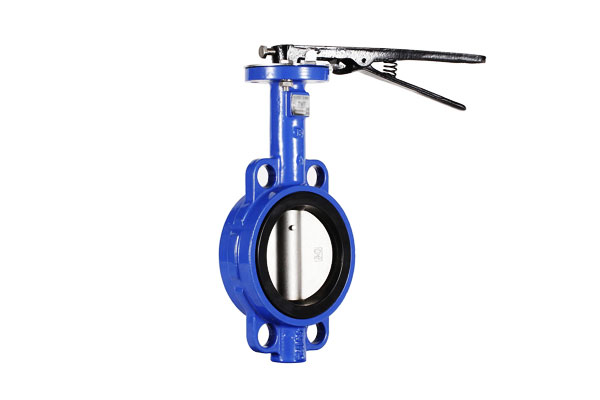
Il-valv tal-wejfer jipprovdi siġill issikkat kontra pressjoni bi-direzzjonali, jipprevjenu fluss lura.
Madankollu, ma jappoġġjax pajpijiet downstream, għalhekk mhuwiex adattat għal applikazzjonijiet li jeħtieġu servizz ta 'dead-end.
Valv tal-farfett tat-Tip tal-Lug
Id-disinn tal-lug karatteristiċi lugs li jisporġu 'l barra b'inserzjonijiet bil-kamin madwar il-korp tal-valv, li jippermetti li l-valv jiġi mbarrat għal kull flanġ separatament.

Din il-konfigurazzjoni tippermetti li naħa waħda tas-sistema tal-pajpijiet tiġi skonnettjata mingħajr ma taffettwa l-oħra, jagħmilha utli għal sistemi li jeħtieġu manutenzjoni perjodika jew iżolament ta 'naħa waħda.
Il-valvoli tat-tip Lug huma adattati għal servizz ta 'dead-end meta jiġu installati bil-klassifikazzjoni tal-pressjoni xierqa.
Valv tal-farfett b'flanġ doppju
Id-disinn b'flanġ doppju jinkludi flanġijiet fuq iż-żewġt itruf tal-korp tal-valv, li huma imbarrati direttament mal-flanġijiet tal-pipeline.
Din il-kostruzzjoni tipprovdi saħħa mekkanika mtejba u appoġġ għal sistemi ta 'pajpijiet tqal.
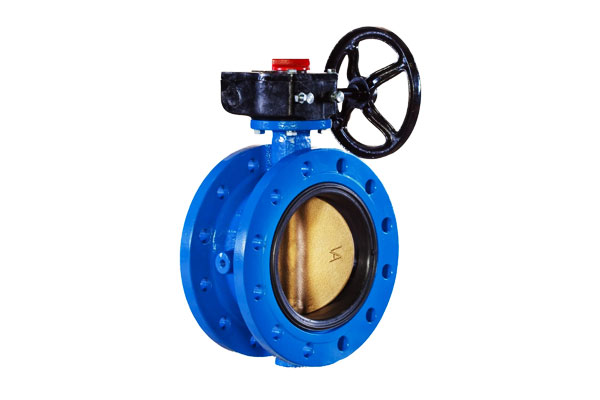
Huwa partikolarment adattat għal pajpijiet ta 'dijametru kbir, installazzjonijiet midfuna, u applikazzjonijiet li jinvolvu ftuħ u għeluq frekwenti.
Valv tal-farfett tat-tarf iwweldjat bil-butt
F'dan it-tip, il-valv huwa wweldjat b'mod permanenti mal-pipeline, l-eliminazzjoni tal-ġonot tal-flanġ u t-tnaqqis tal-punti ta 'tnixxija potenzjali.

Dan id-disinn huwa ideali għal pressjoni għolja, temperatura għolja, jew ambjenti perikolużi fejn l-integrità konġunta u s-siġillar fit-tul huma kritiċi.
Applikazzjonijiet tipiċi jinkludu żejt u gass, Distribuzzjoni tal-fwar, u impjanti tal-proċess li jimmaniġġjaw fluwidi tossiċi jew fjammabbli.
Ibbażat fuq Siġillar u Prestazzjoni
Il-valvoli tal-farfett ivarjaw ukoll abbażi tal-mekkaniżmu tas-siġillar u l-adegwatezza tagħhom għal kundizzjonijiet ta 'pressjoni u temperatura differenti.
Valv tal-farfett bil-qiegħda reżistenti
Dawn il-valvi jużaw sedil elastomeriku artab (bħall-EPDM, NBR, deheb Viton) biex jipprovdi għeluq issikkat tal-bużżieqa.
Id-diska tikkompressa kontra s-sedil biex tifforma siġill, li huwa effettiv għall-ilma nadif, arja, u fluwidi mhux aggressivi.

Il-valvi bil-qiegħda reżiljenti jintużaw ħafna fit-trattament tal-ilma, HVAC, u applikazzjonijiet industrijali bi pressjoni baxxa.
Tipikament joperaw f'livell ta' pressjoni ta' PN10–PN16 u temperaturi sa 200°C.
Valv tal-farfett ta 'prestazzjoni għolja (Offset Doppju)
Valvoli tal-farfett ta 'prestazzjoni għolja jinkorporaw diska li hija kkumpensata mil-linja ċentrali kemm tal-pajp kif ukoll tax-xaft.
Dan id-disinn double-offset inaqqas il-frizzjoni bejn id-diska u s-sedil waqt it-tħaddim, testendi l-ħajja tal-valv u jippermettulu jimmaniġġa pressjonijiet u temperaturi ogħla—sa Klassi 300 u madwar 400°C.
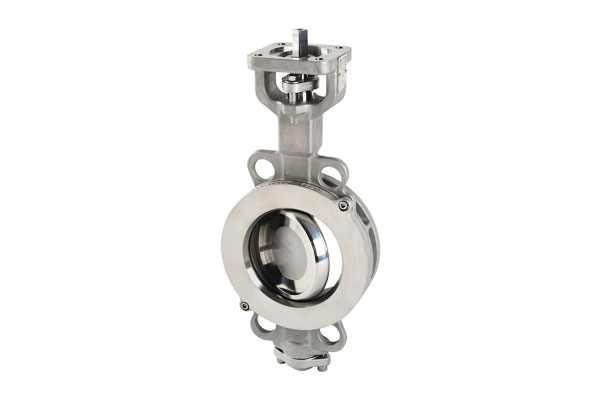
Dawn il-valvi huma adattati għal applikazzjonijiet fil-ġenerazzjoni tal-enerġija, sistemi petrokimiċi, u servizz bil-fwar.
Valv tal-farfett Triple Offset
Id-disinn ta 'offset triplu jinkludi t-tielet offset ġeometriku li jirriżulta f'wiċċ ta' bilqiegħda koniku, telimina t-tħakkik bejn id-diska u s-sedil.
Dawn il-valvi tipikament jużaw bilqiegħda metall għal metall, li jippermettulhom jiksbu għeluq żero ta 'tnixxija (Klassi VI) taħt pressjoni għolja u kondizzjonijiet ta 'temperatura għolja-sa Klassi 600 u 600°C.
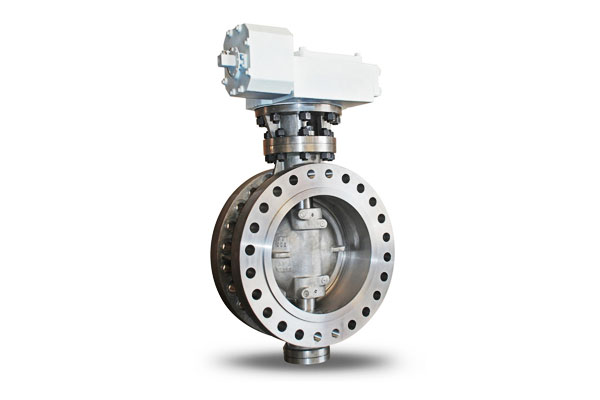
Valvoli triple offset huma ideali għal applikazzjonijiet kritiċi bħall-fwar, servizz krijoġeniku, ipproċessar ta' idrokarburi, u tqandil kimiku korrużiv.
Ibbażat fuq il-Metodu ta 'Azzjoni
Il-metodu ta 'attwazzjoni jiddetermina kif jitħaddem il-valv—manwalment jew permezz ta' awtomazzjoni.
Valv tal-farfett tal-Attwazzjoni Manwali
Il-valvoli manwali tal-farfett jitħaddmu bl-użu ta 'lieva (għal dijametri żgħar) jew operatur tal-irkaptu (għal daqsijiet akbar). Huma kost-effettivi, sempliċi biex tinstalla, u faċli biex tinżamm.
Dawn il-valvi huma xierqa għal sistemi fejn il-bidliet fil-fluss mhumiex frekwenti u tħaddim mill-bogħod mhux meħtieġ.
Valv tal-farfett tal-Attwazzjoni Elettrika
Attwaturi elettriċi jużaw mutur biex jiftħu u jagħlqu d-diska tal-valv, jipprovdu kontroll preċiż fuq il-pożizzjonament tal-valv.
Dawn l-attwaturi jistgħu jiġu integrati f'sistemi awtomatizzati bħal SCADA jew PLCs, li tippermetti tħaddim remot u dijanjostika.
L-attwazzjoni elettrika tintuża komunement fl-awtomazzjoni tal-bini, netwerks tad-distribuzzjoni tal-ilma, u kontroll tal-proċess industrijali.
Valv tal-farfett tal-Attwazzjoni Pnewmatika
Attwaturi pnewmatiċi joperaw il-valv bl-użu ta 'arja kkompressata. Huma magħrufa għal ħinijiet ta 'rispons rapidu u ċikliżmu affidabbli.
Valvoli tal-farfett pnewmatiċi huma komunement misjuba fl-impjanti kimiċi, faċilitajiet għall-ipproċessar tal-ikel, u nadif fil-post (CIP) sistemi, fejn huma meħtieġa attwazzjoni frekwenti u għeluq malajr.
Valv tal-farfett tal-Attwazzjoni Idrawlika
L-attwaturi idrawliċi jużaw fluwidu idrawliku taħt pressjoni biex jiġġeneraw it-torque, jagħmluhom adattati għal valvi ta 'dijametru kbir jew sistemi bi pressjoni operattiva għolja.
Huma joffru trasmissjoni ta 'forza eċċellenti u huma użati f'industriji eżiġenti bħat-tħaffir offshore, impjanti tal-enerġija, u manifattura tqila.
5. Materjali u Kisi ta' Valvoli Butterfly
L-għażla tal-materjali u l-kisi fil-kostruzzjoni tal-valv tal-farfett hija kritika biex tiġi żgurata d-durabilità, kompatibilità kimika, integrità tal-pressjoni, u reżistenza għall-korrużjoni.
Jiddependi fuq l-applikazzjoni—kemm jekk huwiex ilma tax-xorb, kimiċi korrużivi, fwar, jew demel likwidu—diversi kombinazzjonijiet tal-ġisem, diska, sedil, u materjali tal-kisi jintgħażlu biex jissodisfaw it-talbiet operattivi u ambjentali.
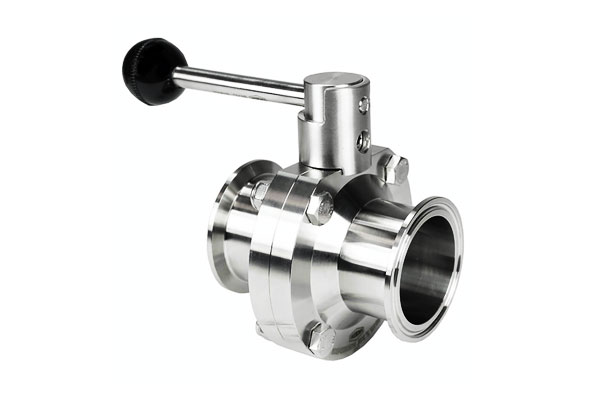
Korp tal-Valv u Materjali tad-Diska
Il-korp tal-valv u d-diska huma komponenti strutturali li għandhom jifilħu pressjoni interna, stress mekkaniku, u espożizzjoni kimika. Materjali komuni jinkludu:
- Ħadid fondut (CI)
Cost-effettiv u użat ħafna f'ilma bi pressjoni baxxa u sistemi HVAC. Mhux adattat għal applikazzjonijiet korrużivi jew b'temperatura għolja. - Ħadid duttili (MINN)
Aktar b'saħħitha u reżistenti għall-impatt mill-ħadid fondut. Ħafna drabi jintuża fid-distribuzzjoni tal-ilma, trattament tad-drenaġġ, u sistemi ta' protezzjoni min-nar. - Azzar tal-karbonju
Adattat għal sistemi ta 'pressjoni għolja u ambjenti industrijali. Jeħtieġ kisjiet protettivi biex jipprevjenu l-korrużjoni. - Azzar li ma jissaddadx (SS304/SS316)
Reżistenza eċċellenti għall-korrużjoni; komunement użati fl-ipproċessar kimiku, ambjenti tal-baħar, u applikazzjonijiet ta' grad ta' ikel. SS316 joffri reżistenza superjuri għall-kloruri u l-aċidi meta mqabbel ma 'SS304. - Bronż jew Nikil-Aluminju Bronż (NAB)
Użati komunement fl-applikazzjonijiet tal-ilma baħar minħabba r-reżistenza eċċezzjonali tagħhom għall-korrużjoni tal-ilma mielaħ u l-biofouling. - Duplex u Super Duplex Stainless Steel
Ipprovdi saħħa mekkanika għolja u reżistenza eċċellenti għall-pitting, korrużjoni tax-xquq, u qsim tal-korrużjoni tal-istress. Ideali għal ambjenti kimiċi aggressivi jew offshore. - PVC, CPVC, u Plastics Oħrajn
Ħfief u reżistenti għall-korrużjoni; ideali għal dożaġġ kimiku, ilma bi pressjoni baxxa, u sistemi ta' pajpijiet mhux metalliċi.
Sedil (Siġill) Materjali
- EPDM (Ethylene Propylene Diene Monomer)
Adattat għall-ilma, arja, u kimiċi ħfief. Mhux kompatibbli maż-żjut jew l-idrokarburi. Firxa tat-temperatura: –40°C sa +120°C. - NBR (Gomma nitrile)
Reżistenti għaż-żjut, karburanti, u xi kimiċi. Użat fl-industrijali, pitrolju, u applikazzjonijiet idrawliċi. Firxa tat-temperatura: –10°C sa +100°C. - Viton (FKM)
Reżistenza eċċellenti għall-kimika u s-sħana. Adattat għal fluwidi aggressivi, solventi, u ambjenti b'temperatura għolja. Firxa tat-temperatura: –20°C sa +200°C. - Ptfe (Polytetrafluoroethylene)
Inerti għal kważi l-kimiċi kollha. Ideali għal applikazzjonijiet korrużivi u ta 'purità għolja. Joffri wiċċ li ma jwaħħalx bi frizzjoni minima. Firxa tat-temperatura: –50°C sa +250°C. - Metall-għal-metall (Stellite, SS, Inconel)
Użat f'valvi tal-farfett triple-offset għal temperatura għolja, pressjoni għolja, u applikazzjonijiet mingħajr tnixxija. Reżistenti għall-erożjoni, ilbies, u ċikliżmu termali.
Xaft u Materjali tal-Bearings
- Azzar li ma jissaddadx
Użat komunement għar-reżistenza u s-saħħa tal-korrużjoni. - 17-4 Azzar li ma jissaddadx pH
Joffri qawwa għolja u ebusija b'reżistenza tajba għall-korrużjoni. - Bronż jew Bearings miksija bit-Teflon
Naqqas il-frizzjoni, ittejjeb ir-reżistenza għall-ilbies, u ttejjeb l-intoppi tal-attwazzjoni.
Għażliet tal-kisi u tal-kisi
Kisjiet protettivi u kisi interni jsaħħu r-reżistenza għall-korrużjoni, ittejjeb il-fluss, u jtawlu l-ħajja tas-servizz:
- Epoxy magħqud bil-fużjoni (FBE)
Jipprovdi protezzjoni mill-korrużjoni eċċellenti għall-ilma tax-xorb u l-applikazzjonijiet tad-drenaġġ. Applikat b'mod elettrostatiku u vulkanizzat biex jifforma kisja dejjiema. - Kisi tan-najlon
Użat għal reżistenza kimika msaħħa u finitura tal-wiċċ aktar lixxa, tnaqqas il-frizzjoni u l-akkumulazzjoni. - Kisi tal-Gomma
Kisi tal-gomma naturali jew sintetiku joffri reżistenza għall-brix u protezzjoni kimika, speċjalment fl-immaniġġjar tad-demel likwidu u servizzi aċidużi. - Kisi PTFE
Joffri inertezza kimika superjuri, użat f'ambjenti korrużivi ħafna u applikazzjonijiet iġjeniċi bħall-ikel u l-farmaċewtiċi. - Flake tal-ħġieġ jew Kisi Epoxy taċ-ċeramika
Użat f'ambjenti ħarxa biex jirreżisti l-erożjoni, pressjoni għolja, u attakk kimiku.
6. Speċifikazzjonijiet Tekniċi Ewlenin tal-Valvoli Butterfly
Klassifikazzjonijiet tal-Pressjoni
Il-valvoli tal-farfett huma manifatturati biex jimmaniġġjaw firxiet ta 'pressjoni speċifiċi, definiti minn standards internazzjonali:
- Ratings PN (metrika)
-
- Pn10: Pressjoni massima 10 bar (~ 145 psi)
- PN16: Pressjoni massima 16 bar (~ 232 psi)
- PN25, PN40 disponibbli wkoll għal valvi ta 'prestazzjoni għolja
- Klassifikazzjonijiet ANSI/ASME (imperjali)
-
- Klassi 150 (sa 285 psi fi 38°C)
- Klassi 300 u 'l fuq għal applikazzjonijiet ta' pressjoni għolja
Firxa tat-temperatura
It-temperatura operattiva ta 'valv tal-farfett tiddependi ħafna fuq il-ġisem, diska, u materjali tas-sedil:
| Tip ta 'materjal | Firxa Tipika tat-Temperatura |
| Sedil EPDM | –40°C sa +120°C |
| Sede NBR | –10°C sa +100°C |
| Sedil PTFE | –50°C sa +250°C |
| Sede Viton | –20°C sa +200°C |
| Metall Bilqiegħda | Sa 600°C |
| PVC/Korpi tal-plastik | –10°C sa +60°C |
Firxa Daqs (Dijametru Nominali)
Il-valvoli tal-farfett huma disponibbli f'firxa wiesgħa ta 'dijametri nominali:
- Medda Komuni:
DN50 (2 pulzieri) sa DN1200 (48 pulzieri) - Medda Estiża:
Sa DN3000 (120 pulzieri) għal proġetti kbar industrijali u infrastrutturali (E.g., impjanti tat-trattament tal-ilma, ħwienet tad-digi)
Koeffiċjent tal-Fluss (CV / KV)
Il-koeffiċjent tal-fluss jirrappreżenta l-abbiltà tal-valv li jippermetti passaġġ tal-fluwidu:
- Cv (Imperjali): Rata tal-fluss (gallun/min) ta 'ilma f'60°F bil 1 qatra tal-pressjoni psi
- Kv (Metrika): Rata tal-fluss (m³/hr) fi 1 tnaqqis fil-pressjoni tal-bar
Valvoli tal-farfett personalizzati tipikament joffru valuri Cv għoljin minħabba d-disinn full-bore tagħhom meta miftuħin għal kollox. Is-Cv jiddependi fuq il-forma tad-diska, daqs tal-valv, u l-grad tal-ftuħ. Pereżempju:
- DN100 (4″) valv tal-farfett: Cv ≈ 120–150
- DN300 (12″) valv tal-farfett: Cv ≈ 1500–2000
Klassijiet ta' tnixxija
Definit minn standards internazzjonali bħal ANSI/FCI 70-2 u Fi 12266, klassijiet ta 'tnixxija jindikaw il-prestazzjoni tas-siġillar tal-valv:
| Klassi | Deskrizzjoni | Użu Tipiku |
| Klassi I | Issikkat għat-trab (mhux ittestjat) | Sistemi industrijali bażiċi |
| Klassi IV | Sedil metall għal metall, tnixxija minima | Kontroll tal-proċess |
| Klassi VI | Tfigħ issikkat tal-bużżieqa (sedil artab) | Ilma, arja, servizzi tal-gass |
Valvoli tal-farfett bil-qiegħda reżiljenti tipikament jissodisfaw il-Klassi VI, filwaqt li valvi bil-qiegħda tal-metall jew triple-offset jistgħu jiksbu Klassi IV jew aktar stretti b'magni speċjalizzati.
Rekwiżiti tat-torque
It-torque operattiv jiddependi fuq id-daqs tal-valv, pressjoni, tip tal-midja, u frizzjoni tas-sedil:
- Valvoli żgħar (DN50–DN150): ~20–80 Nm
- Valvoli kbar (DN600–DN1200): >1000 Nm
7. Vantaġġi tal-Valvoli Butterfly
- Kompatt u Ħfief: Ideali għal installazzjonijiet limitati fl-ispazju.
- Operazzjoni Mgħaġġla: Id-disinn ta 'kwart ta' dawra jippermetti ċikli rapidi ta 'ftuħ/għeluq.
- Kosteffikaċi: Speċjalment f'applikazzjonijiet ta 'dijametru kbir meta mqabbla ma' valvoli tal-bieb jew tal-ballun.
- Waqgħa ta 'pressjoni baxxa: Fluss issimplifikat meta miftuħ għal kollox jimminimizza t-telf tal-enerġija.
- Multi-funzjoni: Adattat kemm għal servizzi on-off kif ukoll ta 'throttling.
- Disinn sempliċi: Inqas partijiet li jiċċaqilqu jirriżultaw fi ħtiġijiet ta 'manutenzjoni aktar baxxi u affidabilità mtejba.
8. Limitazzjonijiet u Sfidi
- Mhux Adattat għal throttling bi pressjoni għolja: Il-pożizzjoni tad-diska tista 'tikkawża kavitazzjoni u vibrazzjoni.
- Degradazzjoni tas-Siġill: Speċjalment f'disinji bil-qiegħda reżiljenti esposti għal operazzjonijiet li joborxu jew b'ċiklu għoli.
- Ostruzzjoni tal-Fluss: Id-diska tibqa 'fil-mogħdija tal-fluss anki meta tkun miftuħa għal kollox.
- Firxa ta' Temperatura Limitata: Is-sedili elastomeriċi jirrestrinġu l-użu f'applikazzjonijiet b'temperatura għolja.
- Potenzjal għal Tnixxija: Speċjalment f'valvi bi prezz baxx jew magħżula b'mod mhux xieraq taħt stress għoli.
9. Applikazzjonijiet ta 'Valvoli Butterfly
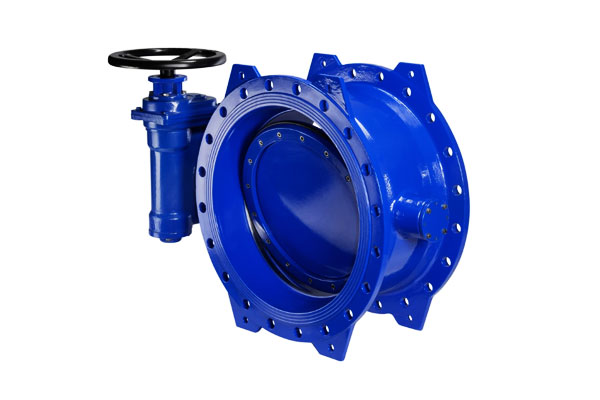
- Ilma & Trattament tal-Ilma Mormi: Effiċjenti għall-iżolament u l-kontroll ta 'ilma nadif u maħmuġ.
- Żejt & Gass: Użat għall-immaniġġjar tal-fjuwil, raffinerija, u sistemi offshore.
- Sistemi HVAC: Jirregola l-ilma sħun jew imkessaħ u d-distribuzzjoni tal-arja.
- Kimika u Petrokimika: Materjali reżistenti jimmaniġġjaw fluwidi u fwar aggressivi.
- Marine & Offshore: Id-daqs kompatt huwa ta 'benefiċċju għal kmamar tal-magni stretti.
- Ikel & Xorb: Valvoli iġjeniċi b'intern PTFE jew li ma jissaddadx huma standard.
- Ġenerazzjoni tal-Enerġija: Ilma li jkessaħ u linji tas-servizz awżiljarju.
- Polpa & Karta: Mankijiet demel likwidu u flussi mgħobbija bil-fibra b'disinji robusti ta 'diska u sedil.
10. Butterfly Valve vs. Tipi oħra ta' Valv
| Karatteristika | Valv tal-farfett | Valv tal-bieb | Valv tal-Globu | Valv tal-ballun |
| Operazzjoni | Kwarta dawra (90° rotazzjoni) | Multi-dawran (dawriet multipli biex tiftaħ/tagħlaq) | Multi-dawran (moviment lineari) | Kwarta dawra |
| Kontroll tal-fluss | On/off u throttling moderat | Primarjament mixgħul/mitfi, throttling fqir | throttling eċċellenti u regolazzjoni tal-fluss | Tfigħ eċċellenti, throttling limitat |
| Qatra pressjoni | Baxx meta miftuħ għal kollox | Baxx ħafna meta miftuħ għal kollox | Ogħla minħabba mogħdija tal-fluss tortuous | Minimu, fluss bore sħiħ |
| Daqs & Piż | Kumpatt, ħafifa, addattat għal daqsijiet kbar | Aktar goff u itqal | Bulker, tipikament daqsijiet iżgħar | Kompatt għal daqsijiet żgħar; goff għal daqsijiet kbar |
| Kapaċità tas-siġillar | Sedili rotob/tal-metall, issikkar moderat | Tfigħ tajjeb | Tfigħ eċċellenti | Issikkat bżieżaq, għeluq issikkat ħafna |
Veloċità ta' Attwazzjoni |
Fast (kwarta dawra) | Bil-mod (dawriet multipli) | Bil-mod (dawriet multipli) | Fast (kwarta dawra) |
| Manutenzjoni | Faċli, inqas partijiet | Aktar suxxettibbli għall-imblukkar, aktar kumplessi | Moderat, manutenzjoni frekwenti meħtieġa | Jeħtieġ iż-żarmar għall-manutenzjoni interna |
| Spiża | Ekonomiku, speċjalment f'dijametri kbar | Ogħla, speċjalment għal daqsijiet kbar | Moderat għal għoli | Ogħla, speċjalment f'daqsijiet kbar |
| Applikazzjonijiet tipiċi | HVAC, trattament tal-ilma, sistemi ta’ pressjoni baxxa/medja | Distribuzzjoni tal-ilma, żejt & pajpijiet tal-gass | Kontroll tal-fwar, applikazzjonijiet preċiżi tal-fluss | Iżolament bi pressjoni għolja, Ipproċessar kimiku |
| Limitazzjonijiet | Mhux ideali għal throttling bi pressjoni għolja | Operazzjoni bil-mod, mhux adattat għat-throttling | Telf ta 'pressjoni ogħla, aktar goff | Goffi u għaljin għal dijametri kbar |
11. Kriterji tal-Għażla
L-għażla tal-valv tal-farfett it-tajjeb tinvolvi evalwazzjoni bir-reqqa ta 'fatturi multipli biex tiżgura l-aħjar prestazzjoni, lonġevità, u kosteffettività f'applikazzjoni speċifika.
Il-kriterji ewlenin jinkludu:
Karatteristiċi tal-fluwidu
- Tip ta' Fluwidu: Likwidi nodfa, demel likwidu, kimiċi korrużivi, jew gassijiet—kull wieħed jeħtieġ materjali speċifiċi tas-sedil u kostruzzjoni tal-ġisem biex jifilħu l-erożjoni, korrużjoni, u brix.
- Viskożità: Fluwidi ta 'viskożità ogħla jistgħu jeħtieġu valvi b'siġillar imtejjeb u torque attwatur.
- Preżenza ta' Solidi: Fluwidi li fihom solidi sospiżi jew partikuli jitolbu sedili robusti u disinji tal-ġisem biex jipprevjenu l-użu u t-tnixxija.
Pressjoni Operattiva u Temperatura
- Klassifikazzjoni tal-Pressjoni: Qabbel il-klassi tal-pressjoni tal-valv (E.g., Pn10, PN16, Klassi 150) għall-pressjoni operattiva tal-pipeline biex tiġi evitata falliment prematur.
- Firxa tat-temperatura: Ikkunsidra l-limiti tal-materjal tas-sedil u tal-ġisem—sedili tal-lastku għal temperaturi baxxi u sedili tal-PTFE jew tal-metall għal servizz f'temperatura għolja sa 600°C.
Issikkar tal-għeluq meħtieġ
- Klassi tat-tnixxija: Għal iżolament kritiku, valvoli tal-farfett triple-offset joffru tnixxija qrib żero (Klassi VI).
Għal applikazzjonijiet inqas impenjattivi, valvi bilqiegħda reżiljenti jipprovdu siġillar ekonomiku bi tnixxija aċċettabbli.
Azzjoni tal-Valv
- Manwal vs Awtomatizzat: Iddetermina jekk lever manwali, irkaptu, pnewmatiku, elettriku, jew attwaturi idrawliċi jixirqu l-aħjar għall-frekwenza tal-operat, rekwiżiti tas-sigurtà, u l-integrazzjoni fis-sistemi ta' kontroll.
- Veloċità tal-Operazzjoni: Applikazzjonijiet li jeħtieġu ċikli rapidi ta 'ftuħ/għeluq jistgħu jiffavorixxu attwaturi ta' kwart dawran.
Restrizzjonijiet ta' Installazzjoni
- Disponibbiltà tal-Ispazju: Il-valvoli tal-farfett tad-dwana għandhom disinn kompatt, jagħmluhom adattati għal installazzjonijiet ta 'spazju limitat meta mqabbla ma' tipi ta 'valvi aktar goffi.
- Tip ta' Konnessjoni: Ikkunsidra l-kompatibilità mal-pajpijiet-wejfer, Lug, jew disinji flanged ibbażati fuq ħtiġijiet ta 'installazzjoni u manutenzjoni.
Spiża vs. Bilanċ tal-Prestazzjoni
- Iżen l-ispejjeż bil-quddiem, rekwiżiti ta' manutenzjoni, u l-ħajja mistennija. Xi drabi l-investiment f’valvi ta’ prestazzjoni għolja jnaqqas l-ispiża totali tas-sjieda permezz ta’ affidabbiltà u inqas sostituzzjonijiet.
12. Xejriet futuri fit-Teknoloġija tal-Valv tal-farfett
- Integrazzjoni intelliġenti: Attwaturi li jaħdmu bl-IoT b'sensors għal monitoraġġ f'ħin reali (pressjoni, temperatura, pożizzjoni), li tippermetti manutenzjoni ta' tbassir.
- Materjali Avvanzati: Korpi tal-fibra tal-karbonju (30% eħfef mill-azzar) għall-użu offshore; sedili taċ-ċeramika għal brix estrem.
- Ambjenti Estremi: Mudelli krijoġeniċi (-196° C.) għall-LNG; disinji b'temperatura għolja (800° C.) għall-impjanti tal-idroġenu.
- Sostenibbiltà: Disinji ta 'tnixxija baxxa (Klassi VI+) biex jitnaqqsu l-emissjonijiet; materjali riċiklabbli għall-korpi tal-valvi.
13. Konklużjoni
Il-valvoli tal-farfett tad-dwana huma komponenti essenzjali fis-sistemi moderni ta 'kontroll tal-fluwidu, magħrufa għad-disinn kompatt tagħhom, operazzjoni mgħaġġla, u versatilità.
Oriġinarjament kunċettwali fil-bidu tas-seklu 20, dawn valvi evolvew b'mod sinifikanti biex jissodisfaw it-talbiet dejjem jikbru ta 'industriji li jeħtieġu soluzzjonijiet ta' kontroll tal-fluss effiċjenti u kosteffettivi.
Illum, valvoli farfett huma użati ħafna f'setturi varji bħal trattament tal-ilma, żejt u gass, HVAC, Ipproċessar kimiku, Marine, u ikel u xorb industriji.
Il-popolarità tagħhom ġejja mill-kapaċità tagħhom li jimmaniġġjaw firxa wiesgħa ta 'fluwidi—inklużi gassijiet, likwidi, u slurries—b'waqgħa minima fil-pressjoni u kapaċitajiet ta 'qtugħ rapidu.
Il-valvoli tal-farfett personalizzati huma pedament tas-sistemi moderni tal-immaniġġjar tal-fluwidu minħabba l-effiċjenza tagħhom, prezz baxx, u adattabilità.
Kemm jekk użat fil-pipelines muniċipali, ipproċessar industrijali, jew ambjenti kkontrollati bi preċiżjoni, għażla tal-valv tal-farfett it-tajjeb—imqabbla mal-pressjoni, fluwidu, u l-ħtiġijiet operattivi—hija essenzjali għall-prestazzjoni u l-affidabbiltà fit-tul.
Dan: Soluzzjonijiet ta 'Valve Casting ta' Preċiżjoni Għolja għal Applikazzjonijiet esiġenti
Dan huwa fornitur speċjalizzat ta 'servizzi ta' ikkastjar ta 'valv ta' preċiżjoni, twassil ta 'komponenti ta' prestazzjoni għolja għal industriji li jeħtieġu affidabbiltà, integrità tal-pressjoni, u preċiżjoni dimensjonali.
Minn kkastjar mhux maħdum għal korpi ta 'valvi u assemblaġġi kompletament maħduma bil-makna, Dan joffri soluzzjonijiet tarf sa tarf imfassla biex jilħqu standards globali stretti.
Tagħna Valve Casting Kompetenza Jinkludi:
Ikkastjar ta 'investiment għall-Korpi tal-Valv & Ittrimmja
L-użu tat-teknoloġija tal-ikkastjar tax-xama' mitlufa biex tipproduċi ġeometriji interni kumplessi u komponenti tal-valvi b'tolleranza stretta b'finituri tal-wiċċ eċċezzjonali.
Ikkastjar tar-ramel & Tidwir tal-moffa tal-qoxra
Ideali għal korpi ta 'valvi medji għal kbar, flanġijiet, u bonits—li joffru soluzzjoni kost-effettiva għal applikazzjonijiet industrijali imħatteb, inkluż iż-żejt & ġenerazzjoni tal-gass u l-enerġija.
Makkinar ta 'preċiżjoni għal Valve Fit & Siġill Integrità
Magni CNC tas-sedili, ħjut, u l-uċuħ tas-siġillar jiżguraw li kull parti mitfugħa tissodisfa r-rekwiżiti tal-prestazzjoni dimensjonali u tas-siġillar.
Firxa Materjal għal Applikazzjonijiet Kritiċi
Minn azzar li ma jissaddadx (CF8/CF8M/CF3/CF3M), Brass, ħadid duttili, għal materjali duplex u ta 'liga għolja, Dan provvisti kkastjar valv mibnija biex iwettqu fil korrużivi, pressjoni għolja, jew ambjenti b'temperatura għolja.
Kemm jekk teħtieġ nases tal-fwar imfassla apposta, valv tal-farfett, valvoli tal-plagg, valvi globu, valvi tal-bieb, jew produzzjoni ta 'volum għoli ta' kkastjar tal-valvi industrijali, DAN huwa s-sieħeb fdat tiegħek għall-preċiżjoni, Durabilità, u assigurazzjoni tal-kwalità.
FAQs
X'inhi d-differenza bejn wafer u valv tal-farfett stil lug?
Il-valvoli tal-wejfer jaqbdu bejn il-flanġijiet (l-ebda toqob tal-boltijiet), filwaqt li l-valvi tal-lug għandhom lugs bil-kamin għall-installazzjoni bil-bolt, li tippermetti t-tneħħija minn naħa waħda. Valvoli tal-lug jixirqu pressjoni ogħla (≤25 bar) minn wejfer (≤16 bar).
Kemm idumu l-valvoli tal-farfett?
Il-ħajja tas-servizz tvarja minn 10-15-il sena għal valvi bil-qiegħda reżiljenti f'servizz nadif għal 5-8 snin għal valvi bil-qiegħda tal-metall f'ambjenti li joborxu. Manutenzjoni xierqa testendi l-ħajja bi 30-50%.
Huma valvi farfett adattati għal demel likwidu jew fluwidi li joborxu?
Valvoli triple-offset bil-qiegħda tal-metall huma adattati; sedili reżiljenti jitnaqqru malajr. Uża materjali tad-diska mwebbsa (E.g., Azzar li ma jissaddadx duplex) għal xedd estiż.

